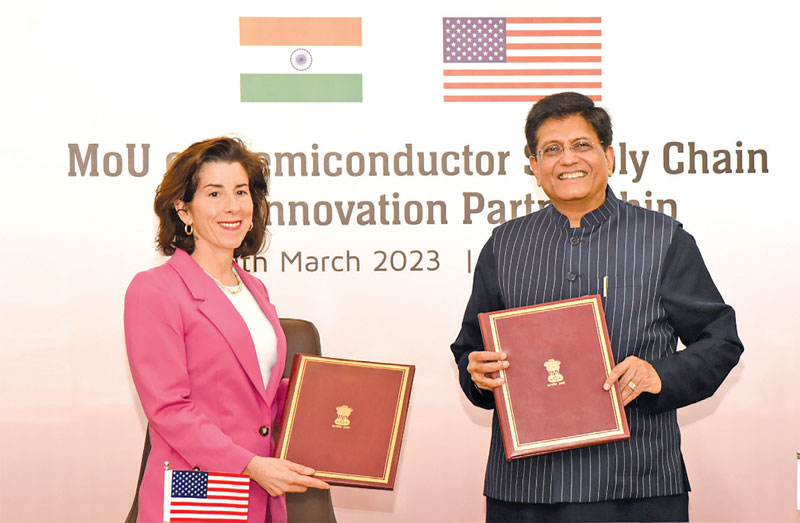Chip off the Old Block
Atul Chandra
India is making a concerted push to grow its semiconductor industry to grow self-sufficiency in both the commercial and defence spheres. According to the National Investment Promotion & Facilitation Agency, the Indian semiconductor market is valued at approximately USD 23.2 billion, which it projects would grow to USD 80.3 billion by 2028, growing at a compound annual growth rate (CAGR) of 17.10 per cent during the forecast period. According to the report on India’s Semiconductor Strategy by Dr Saroj Bishoyi, Research Fellow of the Vivekananda International Foundation, “India currently imports almost 100 per cent of semiconductors. It spent USD67.637 billion on electrical machinery and equipment imports (about 9.5 per cent of India’s total import) in FY 2022-23.” He adds that demand for semiconductors will further increase as India targets to achieve US D300 billion worth of electronics manufacturing in India and USD 120 billion in exports by FY 2026-27 from USD 23.57 billion in FY 2022-23, to realize the goal of a USD 1 trillion digital economy by 2025.

Union minister of commerce and industry Piyush Goyal with the US secretary of commerce, Gina Raimondo
Start-Up Mode
In March 2022, the Government of India announced the launch of the Semicon India programme with a total outlay of INR 76,000 crore for the development of the semiconductor and display manufacturing ecosystem in India. The India Semiconductor Mission (ISM) has been set up as an independent business division within Digital India Corporation and will drive India’s long-term strategies for developing semiconductors and display manufacturing facilities and semiconductor design ecosystem. The costs of developing a homegrown semiconductor industry are considerable.
In February 2022, the Ministry of Electronics & IT announced that three companies—Vedanta in JV (joint venture) with Foxconn, IGSS ventures pte, Singapore, ISMC had submitted applications for setting up 28 nanometre to 65 nanometre Semiconductor Fabs with a capacity of approximately 120,000 wafers per month. The companies had projected an investment of USD 13.6 billion with the expectation of nearly USD 5.6 billion in fiscal support from the Central government. Vedanta and Elest had submitted applications for display fabs at a projected investment of USD 6.7 billion with USD 2.7 billion worth of government support expected.
However, in 2023, Foxconn announced that it was pulling out of its JV, Vedanta Foxconn Semiconductors Pvt Ltd (VFSL) which had planned to invest USD 19.5 billion to set up semiconductor and display production plants in India. Rajeev Chandrasekhar, minister of state for electronics & information technology, skill development & entrepreneurship had clarified then, that VFSL had originally submitted a proposal for a 28-nanometre fab, but could not source an appropriate tech partner for that proposal. Vedanta however has moved ahead on its own for a 40-nanometre fab
Subscribe To Force
Fuel Fearless Journalism with Your Yearly Subscription
SUBSCRIBE NOW
We don’t tell you how to do your job…
But we put the environment in which you do your job in perspective, so that when you step out you do so with the complete picture.








